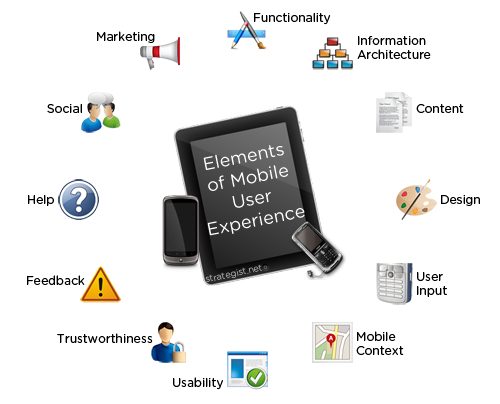Mobile Devices and User Experience
Providing quality user experience is the main goal of mobile devices . This depends on how quality is perceived by users. Quality user experience is achieved when the device behavior meets user’s expectations. User’s perception is highly variable across people of different age, gender, culture and ethnicity. It also depends on contextual and environmental factors. To achieve higher energy efficiency, the device behavior should dynamically adapt to the level of quality perception of the user. A model for user experience is then needed to adjust operating conditions at run time without generating discomfort. New dynamic management techniques should be implemented on real devices. This is the only way in which it is possible to close the loop with the user and get a real feedback in terms of user experience. Also, since the user experience for mobiles highly depends on the content of the foreground application, for development and prototyping it is reasonable to assume that each application has its own required level of performance, and that such level reflects the single user’s expectations.
For example, for dynamic management, the Linux kernel has drivers that manage operating conditions during system operations. Such drivers provide an interface between applications and hardware regulators, and transparently enable the dynamic switching of variables such as operating frequency of different components, number of active computing units, idleness, power state residency and more. The action of these drivers should be regulated at runtime depending on application-specific user experience requirements. To implement dynamic solutions at the level of the operating system and achieve fast prototyping and user’s response, it is necessary to have access to the operating system source code and to be able to identify and modify the components taking care of the run time management of hardware resources. For video and gaming, resolution and frame rate play a fundamental role in quality perception. For example, 60 frames per second (FPS) is a target for mobile gam ing, as it corresponds to the refresh rate of the screen. The quality of experience then drops drastically below 30 FPS . FPS is not the only indicator for video quality. Recent studies based on EEG monitoring revealed that also abrupt changes in quality may cause discomfort for the user . It has been shown that also changes in the environment surrounding the user have an impact on his perception of video quality . Moreover, recent studies have pointed out differences in perception dictated by age and gender. Quality assessment of images is more challenging when considering 3D videos. This should account for effects such as incorrect stereography, binocular rivalry and depth misperception. The study in also investigated how configuration and visualization parameters, such as as different disparities, amount of parallax, monitor sizes and visualization angles, may influence the quality of experience of a 3D interactive environment. Finally, quality perception shows interesting variations when visual and audio content are delivered together. Studies on cross-modal interaction reveal that audio and video content are highly interrelated . For example, a low resolution and low FPS video generate tolerable discomfort for users as long as the audio associated with it has high quality. Unfortunately, in general mobile applications do not have simple and reliable metrics such as FPS to quantify user experience. References and propose a simple and general, yet effective model. Each application is characterized by a target set of maximum operating conditions, which is profiled by interviewing a large sample of people using the most common applications. For example, the authors find out that applications such as browser require lower performance level to still be rated as “good” by users. In publication, this approach is improved by automatically distinguishing different phases. Therefore, online management can provide further savings by lowering performance during application phases that are less critical to user experience. Application performance is not the only factor impacting user experience. High performance can drain the battery in a short time, which can also be a cause of discomfort for the user.



